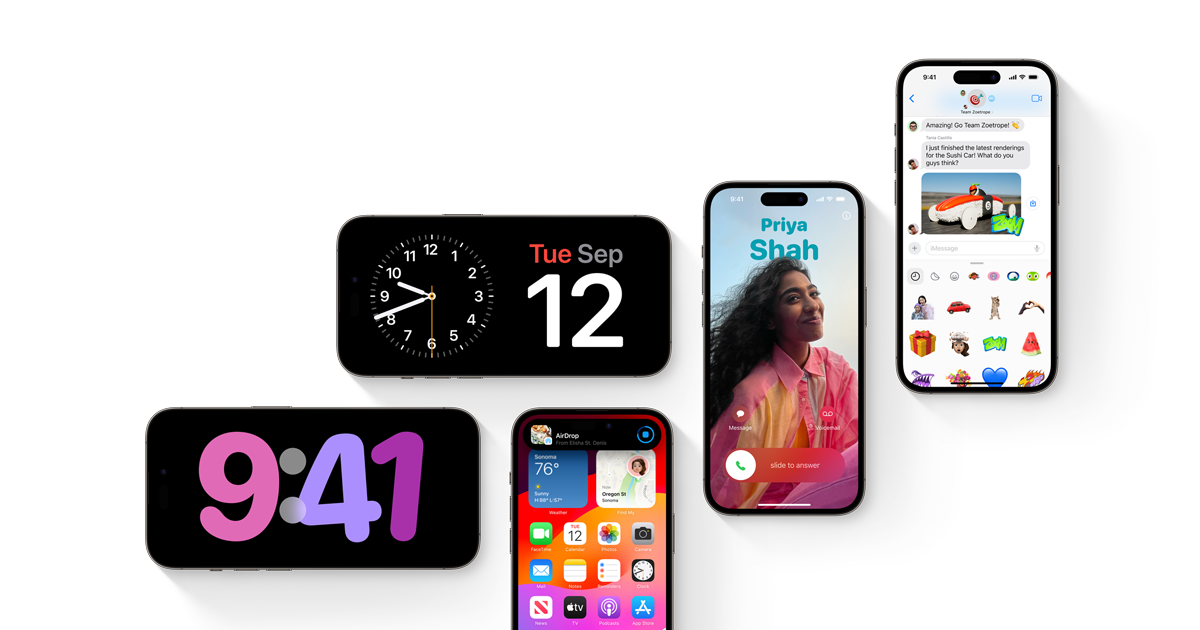Apple’s iOS 17 is the latest major release for the iPhone family, bringing a host of new features and improvements. However, some users have reported experiencing slow internet on both WiFi and mobile data after updating to iOS 17. This can be frustrating, especially when trying to browse the web, stream videos, or download apps. In this guide, we will explore various potential causes for slow internet on iOS 17 and provide effective solutions to help you resolve the issue.
Possible Reasons for Slow Internet on iOS 17
Several factors can contribute to slow internet on iOS 17. These include issues with the Wi-Fi router, mobile carrier outages, network congestion in your area, temporary system glitches, outdated system software, conflicts with network settings, DNS address issues, conflicts with the Wi-Fi assist feature, and more. To help you fix the problem, we have compiled a list of troubleshooting methods that should rectify the slow internet issue on your iPhone running iOS 17.
Solutions to Fix Slow Internet on iOS 17
1. Force Reboot Your iPhone
A force reboot can help resolve temporary system glitches or cache data issues that may be causing slow internet on iOS 17. To force reboot your iPhone, follow these steps:
- Ensure that your iPhone is turned on and unlocked.
- Quickly press and release the Volume Up (+) button.
- Quickly press and release the Volume Down (-) button.
- Quickly press and hold the Power (side) button until the Apple boot logo appears on the screen.
- Release the Power (side) button and wait for your iPhone to boot up.
- Once your iPhone has restarted, check if the slow internet issue has been resolved.
2. Check for iOS Updates
Apple regularly releases software updates for iOS, including bug fixes and performance improvements. It is essential to keep your iPhone updated to the latest version of iOS 17 to ensure optimal performance and fix any existing issues. To check for iOS updates, follow these steps:
- Open the Settings app on your iPhone.
- Tap on General.
- Tap on Software Update.
- If an update is available, tap on Download and Install.
- Follow the on-screen instructions to complete the update process.
- After updating, check if the slow internet issue has been resolved.
3. Power Cycle the Wi-Fi Router
If you are experiencing slow internet on Wi-Fi, it is worth power cycling your Wi-Fi router. Power cycling can refresh the router’s settings and resolve any temporary issues that may be affecting the internet speed. To power cycle your Wi-Fi router, follow these steps:
- Turn off the Wi-Fi router.
- Wait for the LED indicators to stop.
- Unplug the power cable from the router.
- Wait for approximately 30 seconds.
- Plug the power cable back into the router.
- Turn on the Wi-Fi router and check if the slow internet issue has been resolved.
4. Check Your Internet Connection
Sometimes, slow internet on iOS 17 can be due to poor or unstable internet connections. It is essential to cross-check your internet connection, whether you are using mobile data or Wi-Fi. If you are facing app-related issues, such as apps not downloading or unable to update, ensure that your internet connection is stable. You can try using another Wi-Fi network or a mobile hotspot to determine if the slow internet issue persists.
5. Turn On Airplane Mode and Turn It Off
Enabling and disabling Airplane Mode can help refresh your iPhone’s network connections and potentially resolve slow internet issues. To turn on Airplane Mode and then turn it off, follow these steps:
- Open the Settings app on your iPhone.
- Tap on Airplane Mode.
- Toggle the Airplane Mode switch to the On position.
- Wait for a few seconds.
- Toggle the Airplane Mode switch to the Off position.
- Check if the slow internet issue has been resolved.
6. Try Using Another Internet Connection
If you have access to another internet connection, such as a different Wi-Fi network or a mobile hotspot, try connecting your iPhone to that network. This will help determine if the slow internet issue is specific to your current internet connection. If the internet speed improves on the alternate connection, it indicates that there may be issues with your original network.
7. Ensure Your Internet Data Limit is Available
If you are using a limited data plan, it is essential to check if you have reached your data limit. If your data limit has expired, you may experience slow internet speeds until the next billing cycle. Recharge your data plan or wait for the next cycle to restore full internet speed.
8. Forget and Re-Add the Wi-Fi Network
For Wi-Fi connectivity issues, you can try forgetting and re-adding the Wi-Fi network on your iPhone. This can help resolve any conflicts or configuration issues that may be causing slow internet. To forget and re-add a Wi-Fi network, follow these steps:
- Open the Settings app on your iPhone.
- Tap on Wi-Fi.
- Tap on the info button (i) next to the Wi-Fi network you are currently connected to.
- Tap on Forget This Network and confirm.
- Repeat the process for any other Wi-Fi networks you have previously joined but are not currently using.
- Reboot your iPhone and add the Wi-Fi network again.
- Check if the slow internet issue has been resolved.
9. Change the DNS Settings
Changing the DNS (Domain Name System) settings on your iPhone can help improve internet speed and resolve slow internet issues. To change the DNS settings, follow these steps:
- Open the Settings app on your iPhone.
- Tap on Wi-Fi.
- Tap on the info button (i) next to the connected Wi-Fi network.
- Tap on Configure DNS and select Manual.
- Tap on Add Server and enter 8.8.8.8 as the DNS server address.
- Tap on Save.
- Check if the slow internet issue has been resolved.
Note: If you forget the Wi-Fi network for which you have configured the DNS settings, it will revert to the default settings. In that case, you will need to re-add the DNS address.
10. Disable Wi-Fi Assist
Wi-Fi Assist is a feature that automatically switches your iPhone’s internet connection between Wi-Fi and mobile data to ensure a seamless browsing experience. However, in some cases, Wi-Fi Assist can cause slow internet issues. To disable Wi-Fi Assist, follow these steps:
- Open the Settings app on your iPhone.
- Tap on Mobile Service.
- Enable the Mobile Data toggle.
- Scroll down to the bottom of the page.
- Turn off the Wi-Fi Assist toggle.
- Check if the slow internet issue has been resolved.
11. Enable Data Roaming
Enabling data roaming on your iPhone can help resolve temporary networking glitches with your carrier or data plan. However, it is important to note that data roaming should only be enabled when necessary, as it may incur additional charges if you are outside your state or country. To enable data roaming, follow these steps:
- Open the Settings app on your iPhone.
- Tap on Mobile Service.
- Enable the Mobile Data option.
- Enable the Data Roaming feature.
- Check if the slow internet issue has been resolved.
12. Remove and Reinsert the SIM Card
Sometimes, slow internet on iOS 17 can be due to issues with the SIM card. Removing and reinserting the SIM card can help ensure that it is properly connected and functioning. To remove and reinsert the SIM card, follow these steps:
- Use a SIM ejector tool or a paper clip to remove the SIM card from your iPhone.
- Power off your iPhone.
- Wait for a couple of seconds.
- Reinsert the SIM card into your iPhone.
- Power on your iPhone and check if the slow internet issue has been resolved.
13. Try Updating Cellular Settings
Updating cellular settings can help resolve slow internet issues. Contact your carrier’s customer support and ask them to update the cellular settings for your mobile device. They may be able to send the updated settings via message or guide you through the process.
14. Reset Network Settings on iPhone
Resetting network settings on your iPhone can help resolve networking glitches or temporary cache data issues that may be affecting internet speed. However, note that this will also remove configured Wi-Fi networks and passwords, cellular settings, VPN, and APN settings. To reset network settings, follow these steps:
- Tap on Settings.
- Tap on General.
- Select Transfer or Reset iPhone.
- Tap on Reset.
- Choose Reset Network Settings.
- Enter your lock screen passcode if prompted.
- Wait for the process to complete.
- Force reboot your iPhone to apply the changes.
- Check if the slow internet issue has been resolved.
15. Contact Customer Support
If none of the above solutions resolve the slow internet issue on iOS 17, it is recommended to contact your internet service provider’s customer support. They can troubleshoot the issue and provide further assistance. If the problem persists after contacting your ISP, reach out to Apple Support for additional help with the iOS 17 bug.
Conclusion
Slow internet on iOS 17 can be frustrating, but with the troubleshooting methods outlined in this guide, you should be able to resolve the issue. Remember to follow each step carefully and test your internet connection after implementing each solution. If you have further queries or require additional assistance, feel free to leave a comment below. Stay connected and enjoy a seamless browsing experience on your iPhone running iOS 17!






